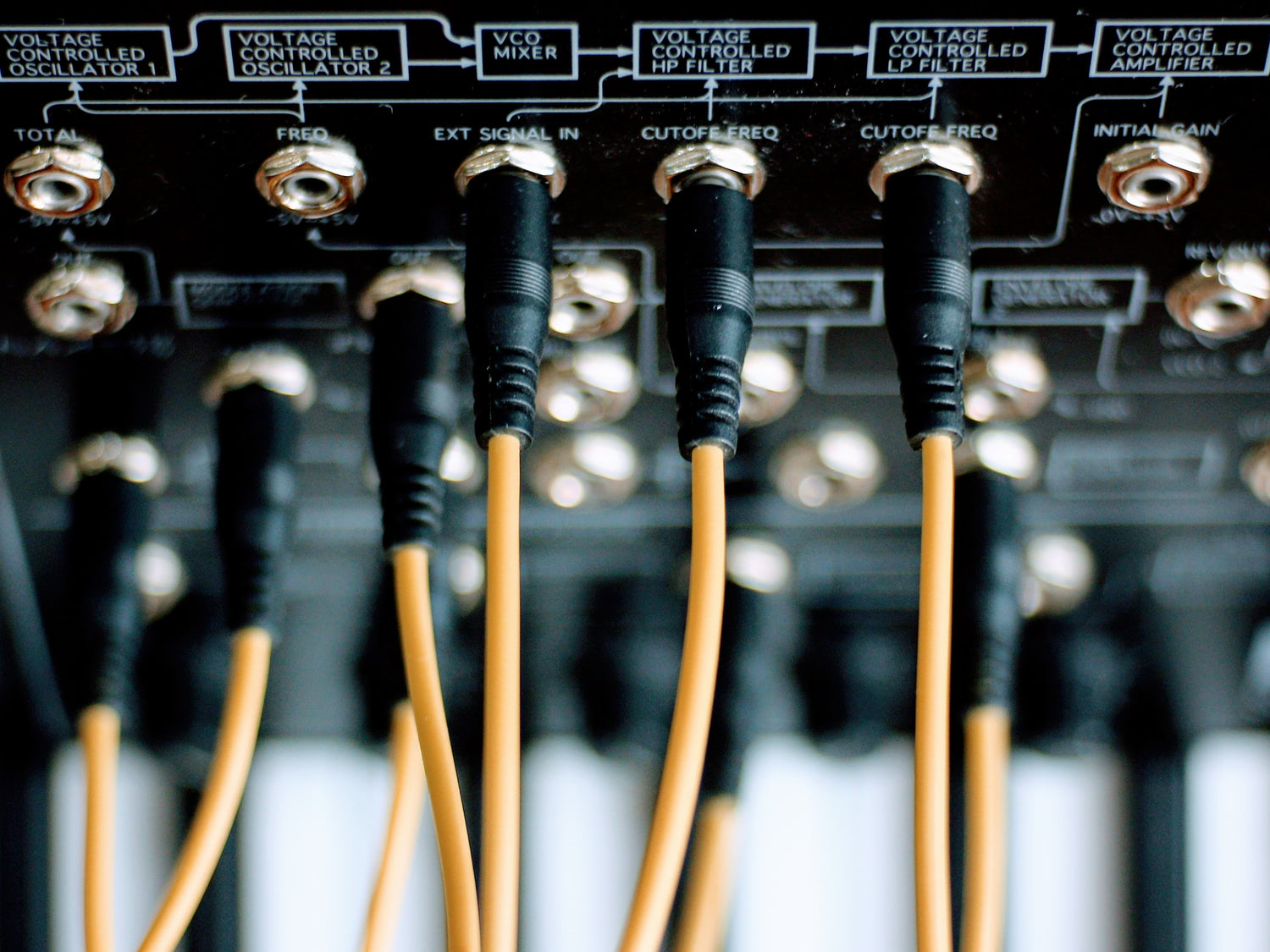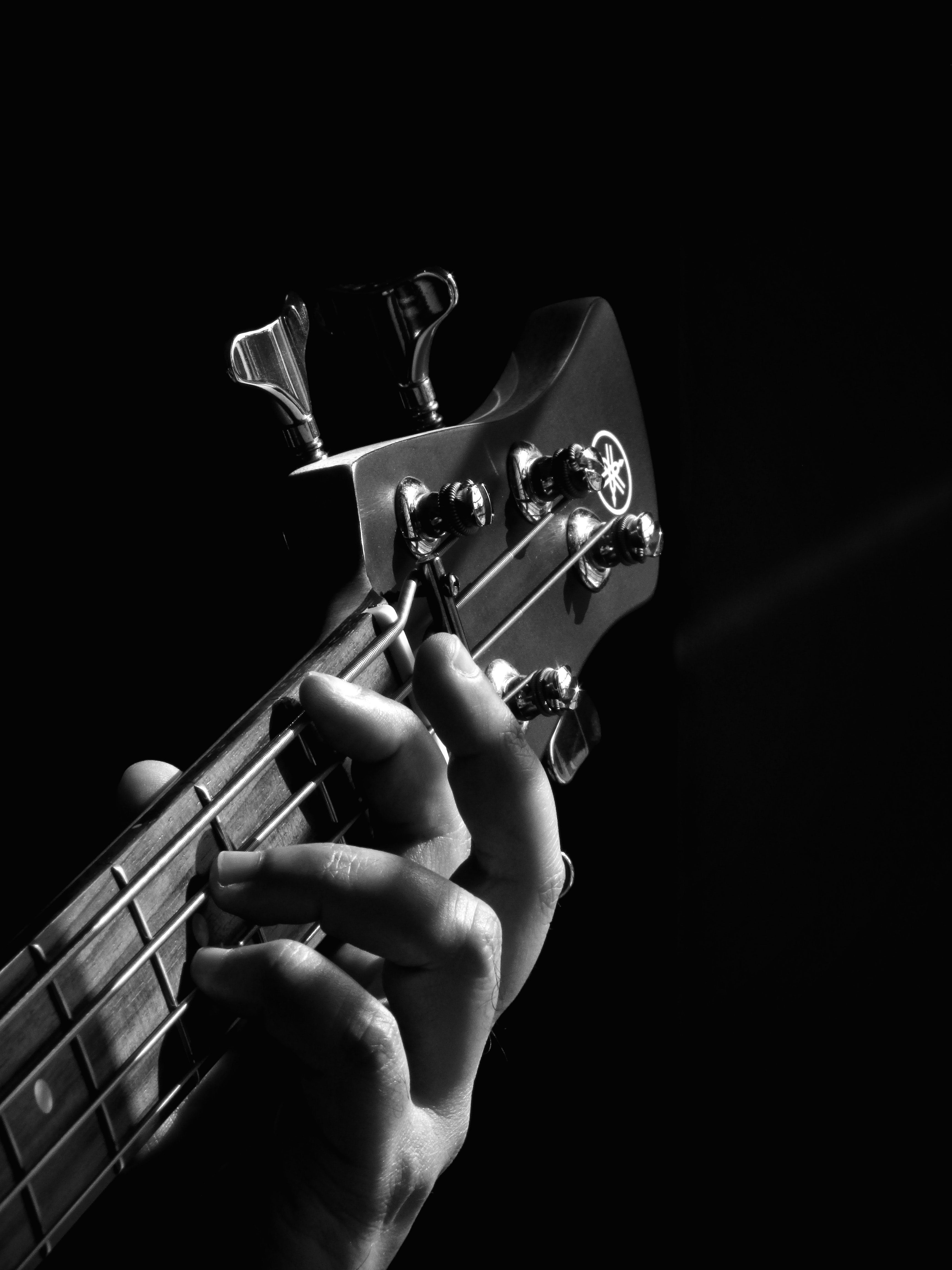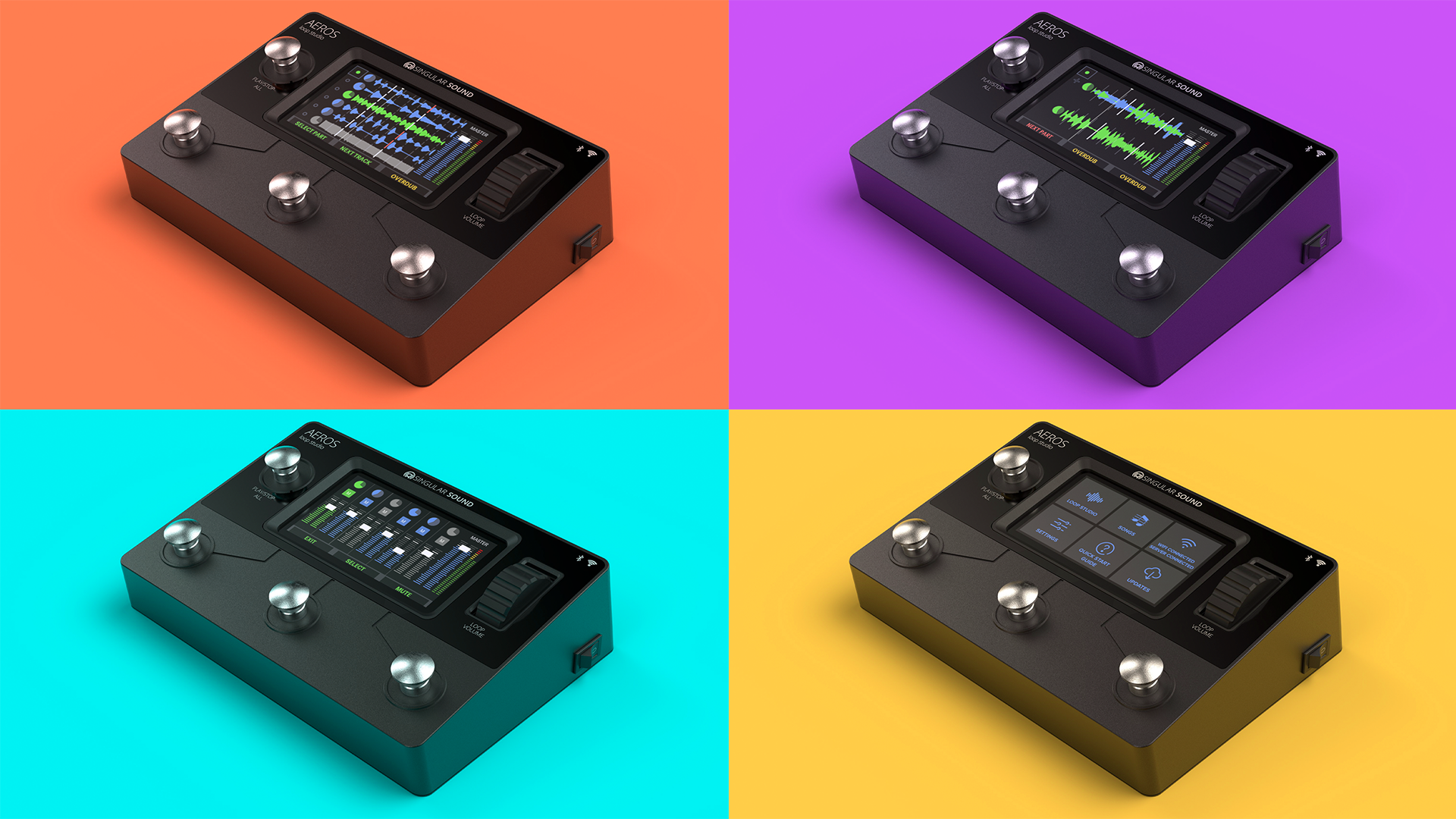Photo by Michel Didier Joomun on Unsplash
When it comes to making music, audio cables aren’t the sexiest topic of all. But sometimes, the most basic topics or details can make the biggest difference in your music. It’s worth breaking down how audio cables help your setup, and what role they play in your music.
Truth is, instrument cables have a major impact. Let’s go over all the important details.
What Are Audio Cables?
Audio cables hook up to your gear and send an audio signal to be output by devices like guitar amps or PA systems. Additionally, you can use them to plug into an audio interface or pre-amp in order to record in your favorite DAW (Digital Audio Workstation).
Types of Audio Cables
There are a host of different audio cable formats. Selecting the correct one is a crucial part of a successful performance. First, we’ll review common types of cables. Then we can talk about quality and brand.
Analog Vs. Digital
- Analog cables transmit audio through continuous waveforms. There are two important subcategories to note: balanced and unbalanced. Balanced cables cancel out noise like electrical humming or interference. They have three internal wires (ground wire, positive polarity, and negative polarity). Unbalanced cables, on the other hand, have just two wires (ground and positive polarity). These wires are much more likely to pick up any background noise than a blanched cable.
- Digital cables transmit audio differently through a sequence of 1’s and 0’s rather than electricity.
Cable Parts
Let’s check out the different audio cable parts.
The Conductor
The conductor allows electricity to pass through the wire. It is responsible for the power of the cable. The size of this part matters, because if it’s too large or too small it will corrupt the purity of the signal from its original audio source.
The Shielding
The shielding helps to eliminate any noise the conductor allows through. This is especially important with regard to unbalanced cables, where noise chatter is more common.
Connectors
Connectors may just look like shiny accessories since they come in different colors and finishes. However, they play a major role in ensuring the signal is uncorrupted. When you purchase a guitar cable, focus in on the quality of the engineering, not the aesthetics.
Cable Examples
Let’s look at a few different audio cables you may use in the studio.
- Usually used for microphone connections, XLR cables are used in both studio recording audio and live performances. They are balanced analog cables made to work over lengthy distances.
- A TS cable is an unbalanced analog cable that is most often used to connect a guitar to its amplifier.
- TRS cables offer three different conductors to offer a balanced signal. The only real difference between this cable and a TS cable is that it has more conductors. TS cables have one conductor.
- Have you seen those tri-colored plugs that connect to matching inputs on TVs? Those are RCA cables. Musically, they are commonly used in turntables.
- USB cables are another example of a basic digital connection. The USB cable is universal to allow computers to connect with other devices, but is also used in microphones, MIDI keyboards and more.
- MIDI cables are one of the most important instrument cables of all. They can sync any MIDI-enabled gear to playback devices, DAWs, fx pedals and more. For instance, the BeatBuddy drum machine hooks up to the Aeros Loop Studio and MIDI Maestro via MIDI.
Do Audio Cables Make a Difference?
Your audio cable can make a huge difference in your quality of sound. The more balanced the cable is, the less likely you are to deal with interference or damage to your recording and performance audio. That's why taking proper care of your guitar cables is vital.
The Top 3 Things to Consider With Your Audio Cables
- The quality of materials. It can make or break your performance. The better the quality, the more strength and durability the cables will have.
- Engineering standards. Make sure that the cable you’re purchasing is compatible with any industry standards, especially when it comes to 5-pin MIDI cables.
- Lastly, make sure the physical design is correct so that the cable actually works for your specific situation. Consider getting a cable organizer to streamline your setup and eliminate slack.
Choosing the Right Audio Cable
With dozens of audio cables, brands and options for this market, it can be confusing. It’s worth asking a professional to help you choose the best option for your specific situation.
After all, music is a collaborative experience. Asking questions is vital, even for things as simple as holding your guitar pick correctly.
As we continue to experiment and learn in the music industry, we progress and evolve. If you aim to make a career out of your music, ask studio musicians how they made it.





Leave a comment
All comments are moderated before being published.
This site is protected by hCaptcha and the hCaptcha Privacy Policy and Terms of Service apply.